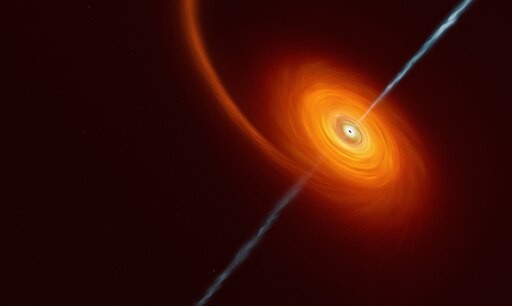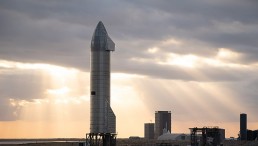Black holes exist in various sizes, ranging from micro black holes that measure up to 0.1mm to ultramassive ones that measure more than 1,000 astronomical units.
These cosmic voids are known to grow in mass by "eating" or capturing nearby material. In a recent study, scientists used the largest and most powerful space telescope to date to gain unprecedented insight into the growth of the oldest black holes in the universe.
Observing Stars With Quasars
One of the most ancient things in the cosmos is quasars, the galactic cores which contain active supermassive black holes. They are a subclass of active galactic nuclei (AGNs), a highly luminous galactic core where dust and gas fall into a supermassive black hole.
Studying quasars, the galactic cores which contain active supermassive black holes, is a formidable task. As cosmic dust and gas accelerate toward the central black hole in a quasar, this quasi-stellar object releases bright radiation, usually a thousand times brighter than the entire Milky Way galaxy. This extreme brightness poses a significant challenge, as it drowns out the light from all the other stars in a galaxy, making it difficult for scientists to observe the fainter light of stars in the quasar's galaxy. This complexity adds to the depth of our research, as we strive to understand their shape and mass.
Characterizing Host Galaxies of Luminous Quasars
At Massachusetts Institute of Technology, a significant breakthrough has been achieved. Researchers have successfully captured the first-ever glimpse of the light of ancient stars, which illuminate some of the biggest, brightest, and oldest black holes in the cosmos. This remarkable feat was accomplished by meticulously unpicking the mixture of signals and detecting the faint stellar light, marking a significant milestone in our understanding of the universe.
In the paper "EIGER. V. Characterizing the Host Galaxies of Luminous Quasars at z ≳ 6", the research team revealed that relative to their host galaxies, these ancient supermassive black holes are almost 100 times bigger than their counterparts in the nearby galaxy. This discovery was made possible thanks to the superior sharpness and resolution of the James Webb Space Telescope.
After more than 120 hours of telescope time, the astronomers observed six quasars, all estimated to be around 13 billion years old. According to lead author Minghao Yue, the quasar outshines its host galaxy by orders of magnitude.
The researchers were able to untangle the signals in the ancient galaxies using the improved data from JWST. They modeled which light appeared to be coming from a quasar and which seemed to originate from the surrounding stars. Then, the masses of each quasar and its host galaxy were estimated using their relative brightness. Still, the reason why these ancient black holes are so massive is not immediately apparent.
Based on the standard pathway for black hole formation, these black holes should not have enough time to grow as big as they are. So, the question of how those cosmic voids could grow so big raises the possibility of alternative formation methods.
One proposed theory is the "direct collapse," a model which suggests that a giant cloud of dust and gas collapses instead of a star collapsing to generate a black hole. Although this is still a theory, a 2023 paper announced the first candidate for a galaxy that contains a direct-collapse black hole.
RELATED ARTICLE: Scientists Score Big by Finding Clues to Why Massive Black Holes Form in Spacetime
Check out more news and information on Supermassive Black Holes in Science Times.















